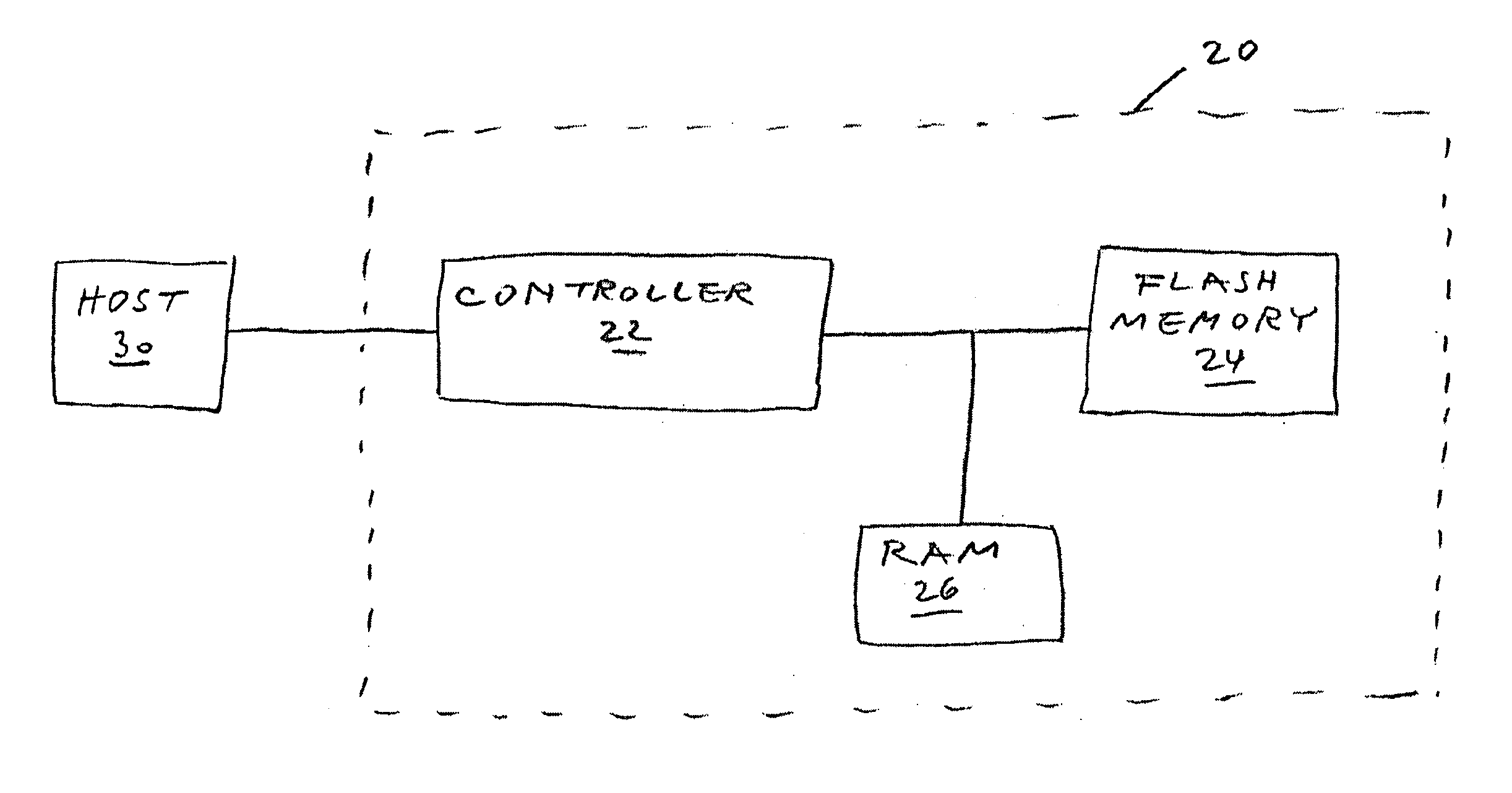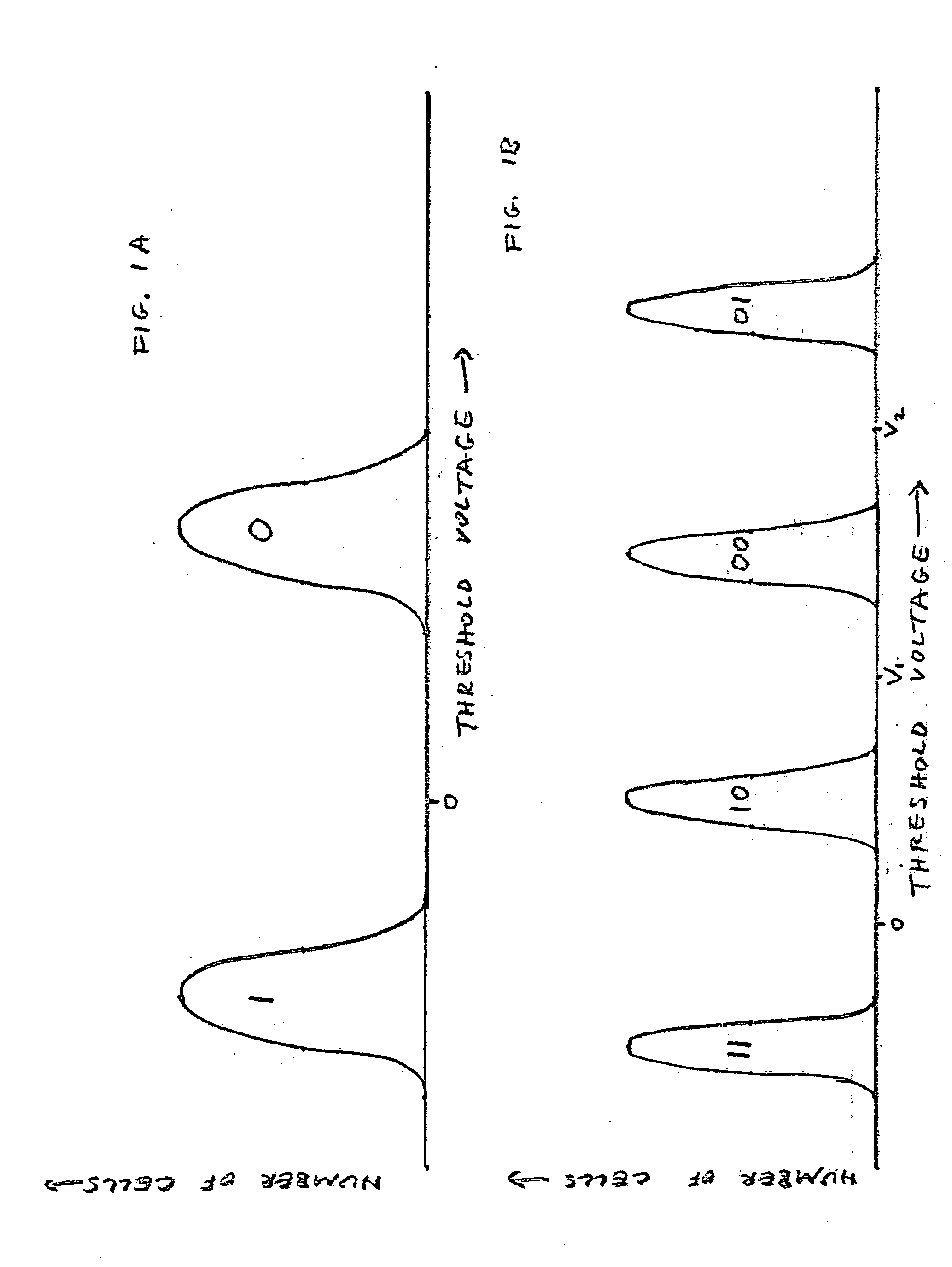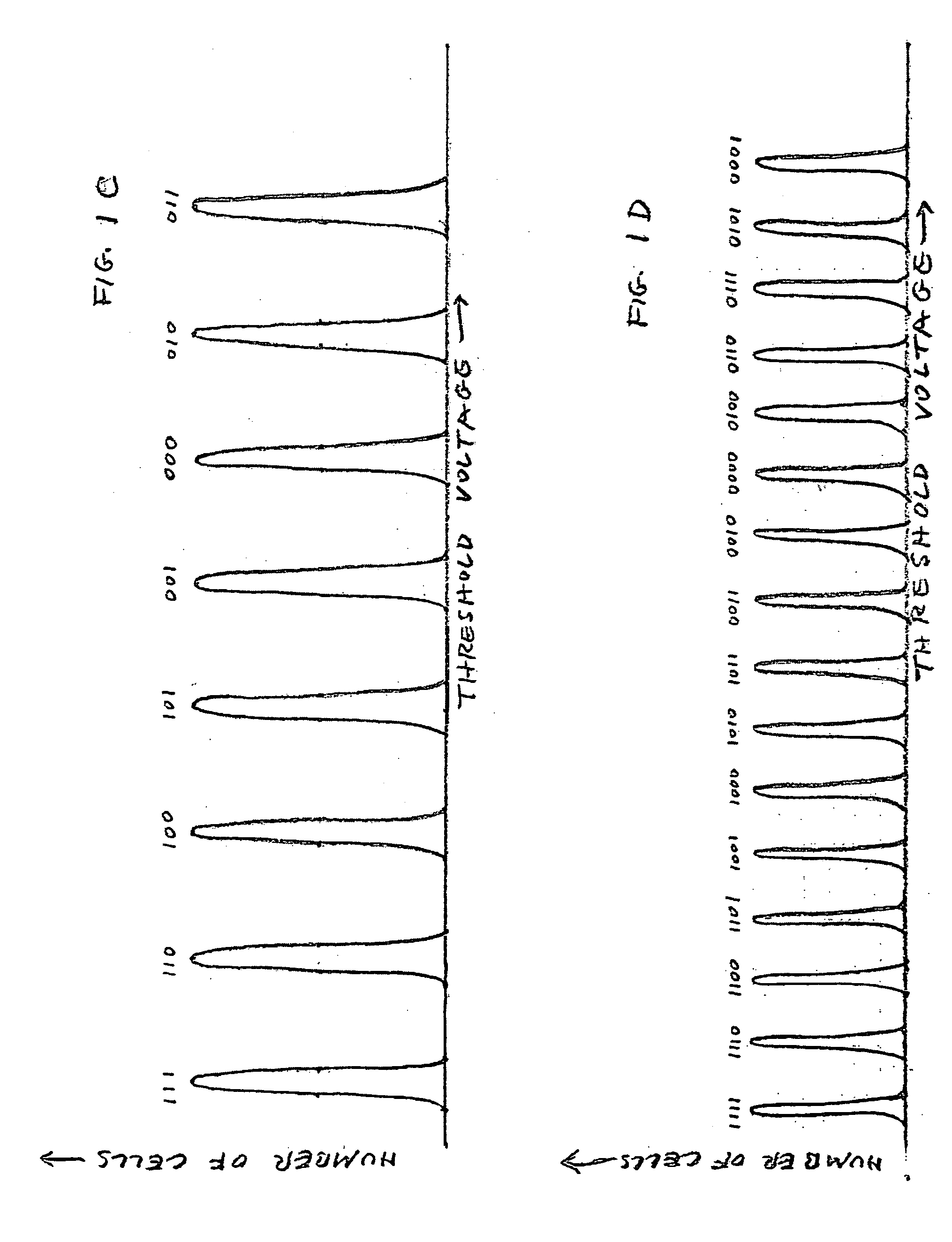Method of error correction in MBC flash memory
a flash memory and error correction technology, applied in the field of digital data error correction, can solve the problems of complex circuitry of ecc schemes operating on a larger codeword, and achieve the effect of less storage bits “wasted", higher expected bit error rate and high ra
- Summary
- Abstract
- Description
- Claims
- Application Information
AI Technical Summary
Benefits of technology
Problems solved by technology
Method used
Image
Examples
Embodiment Construction
[0044] The present invention is of a method of error correction in a Multi-Bit-per-Cell memory.
[0045] The principles and operation of MBC error correction according to the present invention may be better understood with reference to the drawings and the accompanying description.
[0046] In all prior art methods (such as the methods of Lasser'634 and Murin) the data to be stored in a group of MBC cells is provided to the storage system from the outside as multiple logical pages, and ECC parity bits are then separately calculated for each logical page. Furthermore, in most such systems all the data bits of a logical page and the corresponding parity bits of that same page are stored in the same bit page. The method of Murin is an exception to this second observation, as the interleaving scheme results in the bits of a logical page being scattered in multiple bit pages. But even Murin obeys the first observation of the parity bits of a logical page depending only on the data bits of th...
PUM
 Login to View More
Login to View More Abstract
Description
Claims
Application Information
 Login to View More
Login to View More - R&D
- Intellectual Property
- Life Sciences
- Materials
- Tech Scout
- Unparalleled Data Quality
- Higher Quality Content
- 60% Fewer Hallucinations
Browse by: Latest US Patents, China's latest patents, Technical Efficacy Thesaurus, Application Domain, Technology Topic, Popular Technical Reports.
© 2025 PatSnap. All rights reserved.Legal|Privacy policy|Modern Slavery Act Transparency Statement|Sitemap|About US| Contact US: help@patsnap.com



